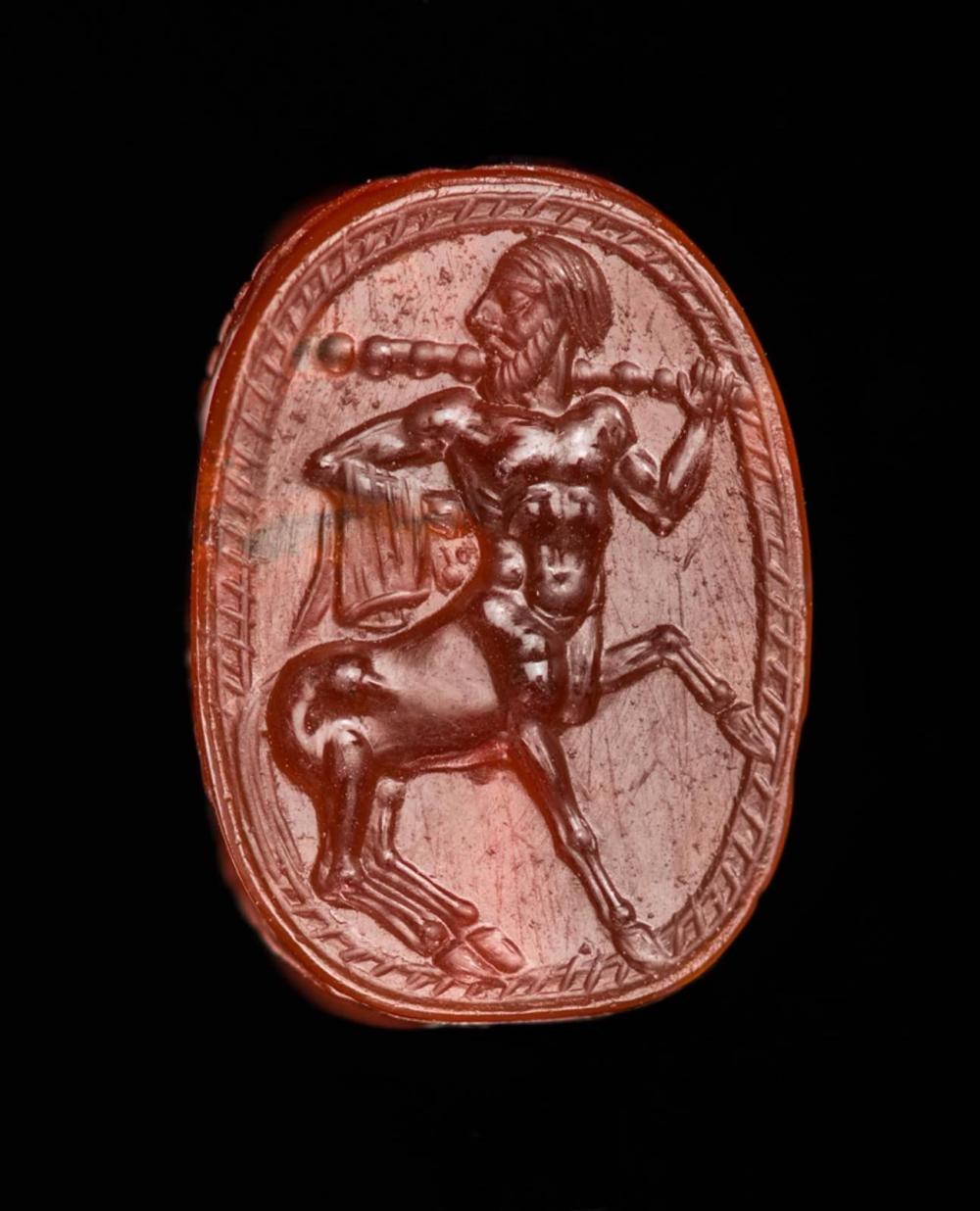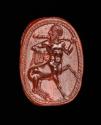Advanced Search
Scarab with the centaur Nessos
Italic, Etruscan
Classical Period
4th century B.C.
Medium/Technique
Carnelian
Dimensions
Length: 13 mm (1/2 in.)
Credit Line
Helen and Alice Colburn Fund
Accession Number31.965
NOT ON VIEW
CollectionsJewelry, Ancient Greece and Rome
ClassificationsJewelry / Adornment – Scarabs and scaraboids
DescriptionDark, orange-red carnelian with dark inclusions. Scarab with a flat, oblong intaglio base; pierced lengthwise. The centaur Nessos in ¾ view and head looking back walking to right. He holds a club over his left shoulder and carries a cloak over his right arm. Cable border. Back carved as a beetle with two lines dividing the thorax and elytra. Two lines between the elytra. Winglets indicated with three and four diagonal lines. Plastic, hatched legs. Thin, offset plinth.
ProvenanceBy 1839, Francesco Capranesi (b.1796 - d.1854), Rome.[1] By date unknown, Richard Norton; August 11, 1908, loaned to MFA by Richard Norton (as 423.08); returned December 12, 1929; December 3, 1931, purchased by MFA for $ 160.00.
[1] The 1839 Bullettino dell’Istituto di corrispondenza archeologica features in its catalog of gem impressions made by Tomasso Cades the description of a gem resembling the MFA scarab (p. 101, no 25) and lists it as being in the Capranesi collection. No illustration is included in the Bullettino, but an impression corresponding to the MFA scarab is indeed found among the Cades plaster casts kept at the Deutsches Archäologisches Institut in Rome. According to the Bulletino, the gem was discovered in 1835 or shortly thereafter.
[1] The 1839 Bullettino dell’Istituto di corrispondenza archeologica features in its catalog of gem impressions made by Tomasso Cades the description of a gem resembling the MFA scarab (p. 101, no 25) and lists it as being in the Capranesi collection. No illustration is included in the Bullettino, but an impression corresponding to the MFA scarab is indeed found among the Cades plaster casts kept at the Deutsches Archäologisches Institut in Rome. According to the Bulletino, the gem was discovered in 1835 or shortly thereafter.




